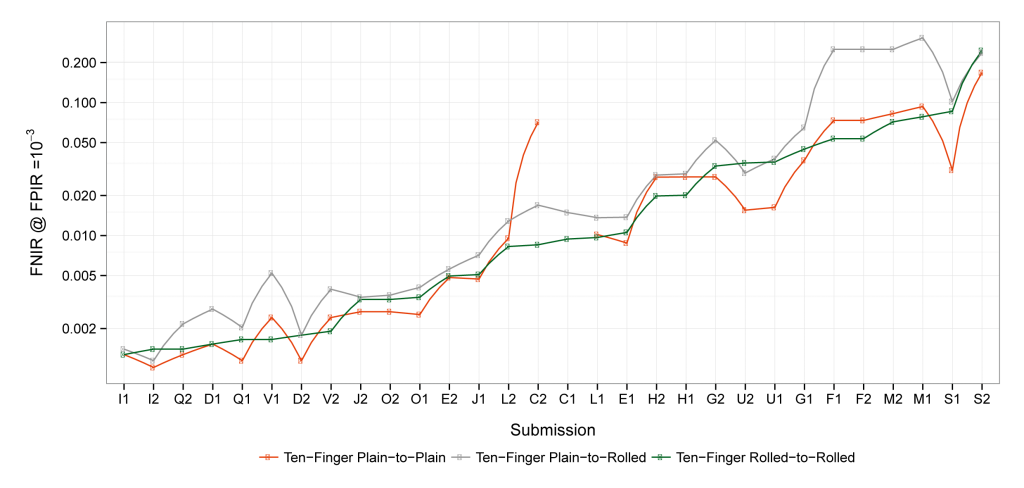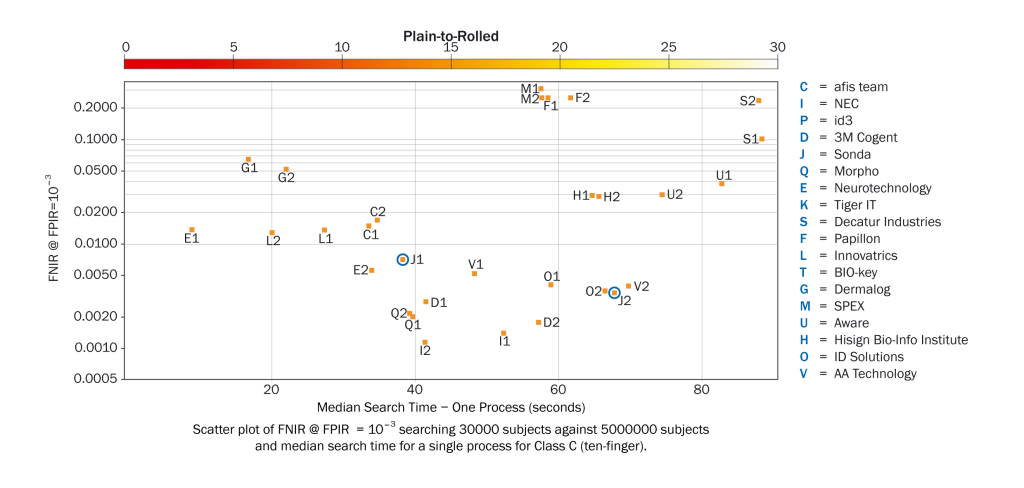FpVTE-2012 Fingerprint Vendor Technology Evaluation

By the end of 2014 the National Institute of Standards and Technology (NIST) completed FpVTE-12 testings (Fingerprint Vendor Technology Evaluation 2012). It was the most important testing in the world of biometric identification which lasted for two years. FpVTE was conducted primarily to assess the current capabilities of fingerprint identification technologies in one-to-many mode using operational datasets containing several million subjects.
This was the first large-scale one-to-many fingerprint evaluation conducted at NIST in its history. The main feature of the tests is the large scale databases and various data types. The current FpVTE used a testing model closer to real one-to-many identification systems. The number of subjects used was also significantly higher, about 10 million subjects in the testing data sets.
There were three classes of participation that examined one-to-many identification using various finger combinations from single finger up to ten fingers. Class A used index fingers capture data and evaluated index fingers identification without segmentation on database of 1.6 million records. Class B used identification flat captures (4-4-2; left slap, right slap, and two thumbs simultaneously). It evaluated ten-finger, eight-finger and four-finger identification with segmentation on database of 3 million records. Class C used rolled and plain impression (4-4-1-1; left slap, right slap, left thumb, and right thumb) captures. It evaluated ten-finger rolled-to-rolled, plain-to-plain and plain-to-rolled identification with segmentation on database of 5 million records.
Both experts and organizers of tests gave much attention to the results in Class C on database of 5 million records. The first three places on identification accuracy were granted to three biometric giants: NEC, Morpho / Safran and 3M Cogent.
Sonda in the plain-to-rolled searching mode took the 4-th place right after the leaders. In plain-to-plain and rolled-to rolled modes Sonda was on the 5-th place. The error probability of 0.3% differed about two times from the group of leaders. But in some tests the searching speed and length of mathematical code of Sonda’s algorithms exceeded leaders. So in all other tests Sonda invariably held positions in the top five. Thus, Sonda’s algorithms provided high accuracy while limiting time and computational resources for most finger combinations.

Following the testing results the NIST team marked out a group of five companies which submitted optimal algorithms based on three factors: identification accuracy, searching speed and computational resources required. Those companies are: Sonda (Russia), Innovatrics (Slovakia), Morpho (France), ID Solutions (USA) and AA Technology (China).

